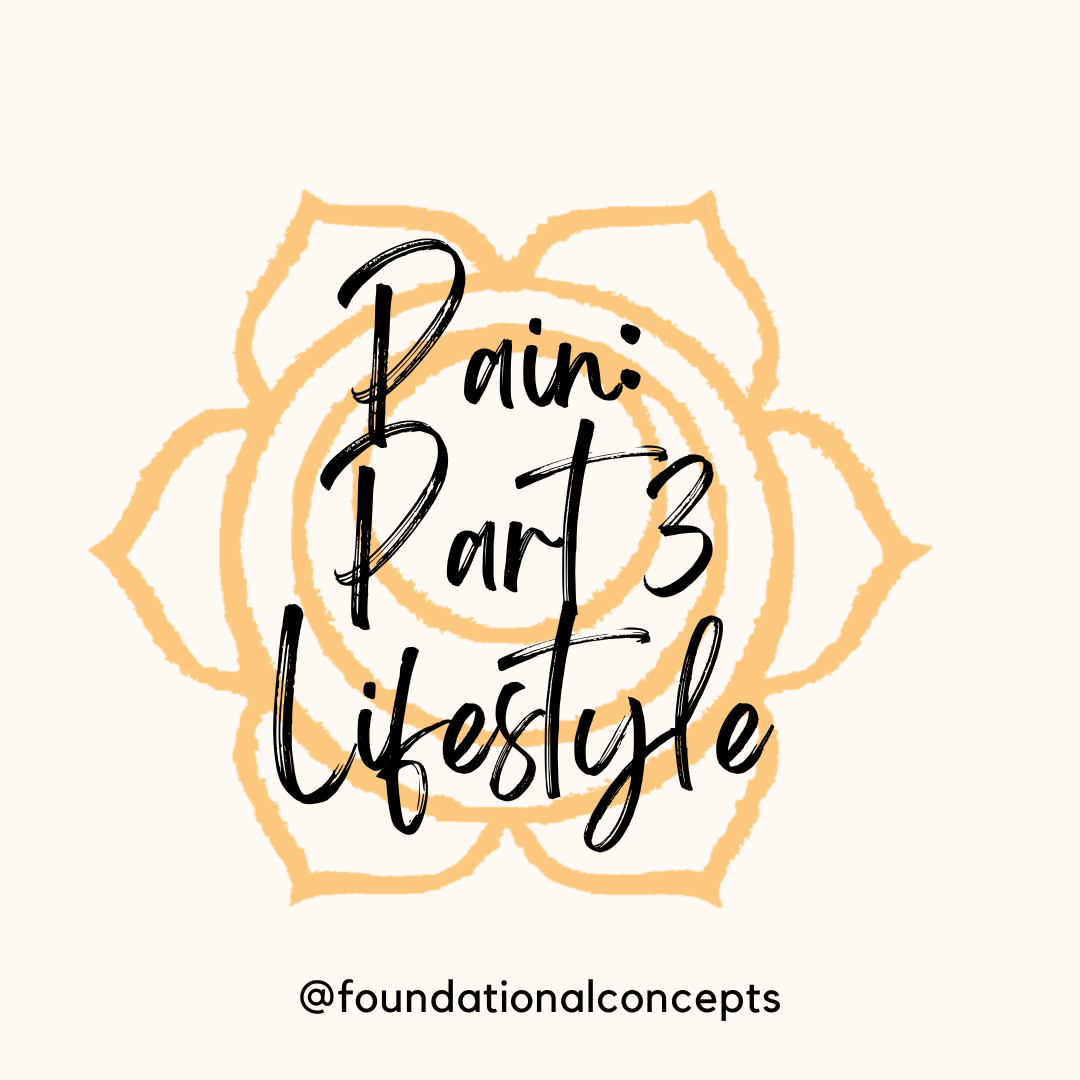In Pelvic Floor Physical therapy, as we look over our patients’ intake paperwork, one thing…

Pain: Part 3 Lifestyle
Overactivity of the sympathetic nervous system can continue the vicious cycle of pain. Our body feels threatened and our brain continues in the fight or flight protection. This can cause long-term health concerns beyond the pain that you are experiencing. Longterm increased activity of the sympathetic nervous system can contribute to increased heart rates, high blood pressure, type 2 diabetes, and increased risk of heart attacks or strokes.
With these cascading effects, we want to manage the sympathetic nervous system response for long term health as well as pain management. Here are some things to incorporate to calm our systems down.
- Relaxation techniques: These can come in many forms. The first key step is connecting with your diaphragm and incorporating a breathing exercise for calming your system down. This can include focused breathing, meditation on a calming word (peace may be one), repetitive prayer or a mantra, or slow, gentle movement like tai chi.
- Physical activity: Exercise can help to lower our stress response and calm our nervous systems. This could include going for a walk and focusing on your breath. This is also a good place to incorporate yoga, qi gong, or tai chi for gentle, controlled, and focused movements. These activities also allow us to check in with our bodies as we move through gentle ranges of motion and practice not overdoing because it is a “good day.” This allows us to practice our “I am sore, but I am safe” mantra in a controlled space.
- Social support: Multiple studies have shown that people with even a few close relationships have improved longevity. These relationships can help to create a buffer and provide emotional support during times of increased pain or stress. These relationships can help to bring us back into our parasympathetic –rest and digest—nervous system.
- Nutrition: Eating a diet with whole, unprocessed foods on a regular schedule helps to decrease cortisol levels which may help with pain management. Foods that are high in magnesium (avocados, bananas, broccoli), protein (fish, poultry, beans, legumes), vitamin B (eggs, chicken, nutritional yeast), probiotics (kombucha, pickled foods), and omega-3 fatty acids (chia or flax seeds, salmon, walnuts) are good choices to incorporate into your diet. These help to metabolize cortisol, reduce inflammation, balance blood sugar levels, and promote muscle relaxation.
Incorporating a well-balanced lifestyle can help with managing our sympathetic nervous system response which in turn can assist in pain management as well as promoting a long-term healthy lifestyle. Working with a physical therapist who understands pain can incorporate all of these strategies into your treatment plan.




